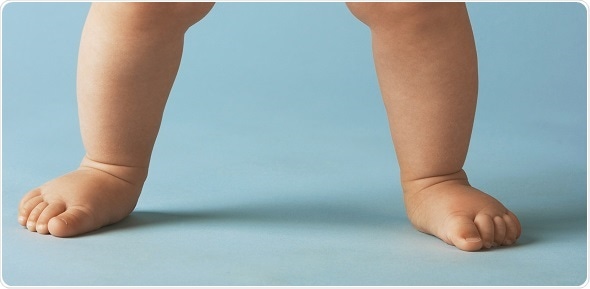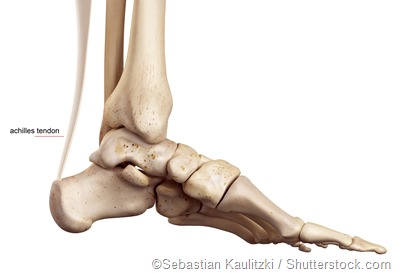Flatfoot in Children
In children, flatfoot is referred to as pediatric flatfoot. It is estimated that up to 9 in every 10 children in North America (amongst other parts of the world) are born with this foot shape.
There are three different types of flatfoot that may be found in children. Classification is important in order to determine the specific kind of therapy the patient will need. Fat pads are found in the feet of babies and toddlers, which make them appear to have flat feet whenever they are standing. This type of flatfoot is generally called flexible flatfoot and is found in nearly all children, usually affecting both feet.

©bikeriderlondon / Shutterstock.com
The second type, which is rare in young children, is a flexible flatfoot with an accompanying short Achilles tendon. This type of flatfoot affects both feet and causes disability. The third type is rigid flat foot – this is the least common and is seen in patients with an underlying problem of the bones in their feet and causes pain and disability.

A flexible flatfoot is usually painless and does not, in any way, interfere with the functioning of the child’s feet or legs. An affected child will be able to walk, run and play sports. In flexible flatfoot, the arch in a child’s foot will reappear when sitting or tiptoeing. Furthermore, most children will usually outgrow their flexible flatfoot on their own by their fifth birthday. This is because their baby fat disappears as they grow and the muscles in their feet strengthen with activities like walking, which requires weight-bearing.
Diagnosis
Flatfoot is easy to spot – a child’s foot and ankle are examined. As the child stands, the feet are carefully inspected. The child is asked to dangle their feet in the air while sitting on an examination table or to stand on tiptoes. The joints are also examined. An ankle that does not move much is indicative of a short Achilles tendon. Radiographs might be done if a child has flatfoot together with pain.
Treatment and prevention
Although normal flexible flatfoot is mostly painless in young children, its presence in older children and adolescents may cause pain. Sometimes pain will occur during or after moments of intense physical activity, such as running or other sports. These children may complain that their feet, ankles or legs are tired. Moreover, they may experience aching pains at night.
Children who experience pain may require heel stretching exercises in order to lengthen their heel cords. In addition to this, orthotics, which are shoe inserts, may be recommended as their composite materials provide comforting support. However, the use of orthotics is not recommended in children with a short Achilles tendon, because it may cause more pain. Physical therapy may be needed. If all else fails, surgery may be recommended for those who are at least 8 years old and have short Achilles tendons. There is no known way to prevent flatfoot.
Sources
- http://www.journalagent.com/nci/pdfs/NCI_1_1_57_64.pdf
- my.clevelandclinic.org/…/hic-pediatric-flatfoot
- www.seattlechildrens.org/…/
Further Reading
- All Child Health Content
- How Long should my Child Sleep for?
- Growing Pains
- Headaches in Children
- How Can I Tell if My Child is Depressed?
Last Updated: Feb 26, 2019

Written by
Dr. Damien Jonas Wilson
Dr. Damien Jonas Wilson is a medical doctor from St. Martin in the Carribean. He was awarded his Medical Degree (MD) from the University of Zagreb Teaching Hospital. His training in general medicine and surgery compliments his degree in biomolecular engineering (BASc.Eng.) from Utrecht, the Netherlands. During this degree, he completed a dissertation in the field of oncology at the Harvard Medical School/ Massachusetts General Hospital. Dr. Wilson currently works in the UK as a medical practitioner.
Source: Read Full Article
